Albuca fastigiata
Albuca fastigiata Dryand.
Family: Hyacinthaceae
Common names: large spreading white albuca (Eng.), slymstok, slymuintjie (Afr.), umaphipha-intelezi (isiZulu).
Introduction
The large spreading white albuca, is a fascinating and striking plant that adds interest and texture to any garden or indoor space. It is also used in ethnomedicine and it contains compounds with antioxidant and antimicrobial properties.

Description
Description
Albuca fastigiata is a bulbous herb that grows 140–600 mm, up to 900 mm tall. The bulbs are small, about 70 mm in diameter, spherical, with a covering of brown, papery skin. Its leaves are bright green with a silvery band down the middle, hairless, firm-textured, long and narrow, folded lengthwise along its midrib with the upper surface facing inward (conduplicate), with conspicuous veins, and margins that are wavy (sinuate), translucent (hyaline) and with a fringe of minute hairs (ciliate). A plant produces 5 or 6 leaves and they can grow 300-600 mm long and are often twisted and tangled, adding to the plant's ornamental value. In the spring, Albuca fastigiata produces a tall, slender flower stalk that is shorter than the leaves and bears a flattish head of small, about 25 mm long, white flowers, sometimes yellow at the tip, with broad green stripes, fading to reddish brown. The flowers are held erect and the flower head appears flat-topped because the lower pedicels are longer than those at the tip of the stalk. Flowering time is in spring and early summer (September to January).
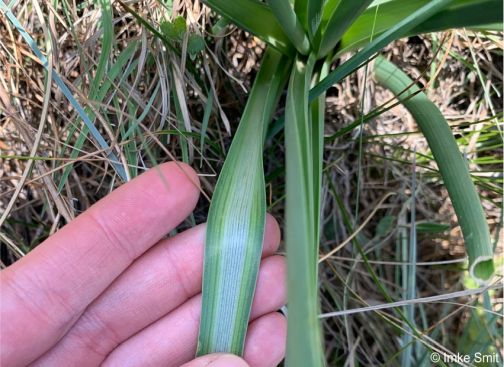
Conservation Status
Status
Albuca fastigiata is not threatened and is assessed as Least Concern (LC) by the Red List of South African Plants.
Distribution and habitat
Distribution description
Albuca fastigiata is endemic to southern Africa, mainly found in the Eastern Cape and KwaZulu-Natal provinces of South Africa, where it grows in crevices and on ledges of damp sandstone cliffs, in stony and rocky ground, both hanging from cliffs and growing erect. According to specimens in the SANBI herbariums and iNaturalist sightings, its distribution range extends through the eastern regions of southern Africa, approximately between Gqeberha in the Eastern Cape and uPhongolo in KwaZulu-Natal from the coast to the Drakensberg Mountains, with a few observations in the Free State Drakensberg at 1 800–2 400 m, and with one herbarium specimen from the Abel Erasmus Pass in Mpumalanga. It is possible that this species also occurs in Lesotho, Eswatini and southern Mozambique.

Derivation of name and historical aspects
History
The name Albuca fastigiata is derived from Latin. The genus name Albuca is derived from the Latin word albus, meaning ‘white’, likely referring to the white or pale-coloured flowers of many species within this genus. The species name, fastigiata, meaning ‘fastigiate’, comes from the Latin word fastigium, meaning ‘a pointed or tapering shape’. In botany, fastigiate describes a shape or habit where the branches or stems are erect and parallel with the main stem, such as the inflorescences of Albuca fastigiata.
This species has one synonym: Ornithogalum fastigiatum (Dryand.) J.C.Manning & Goldblatt.
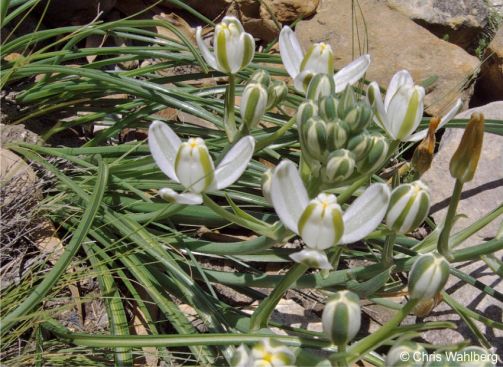
Ecology
Ecology
Albuca fastigiata is a plant species endemic to eastern southern Africa, growing in well-drained, sandy soils in full sun to partial shade. It inhabits damp rocky ground and cliffs. The plant relies on insects for pollination, and wind for seed dispersal, and provides food and shelter for insects and animals.
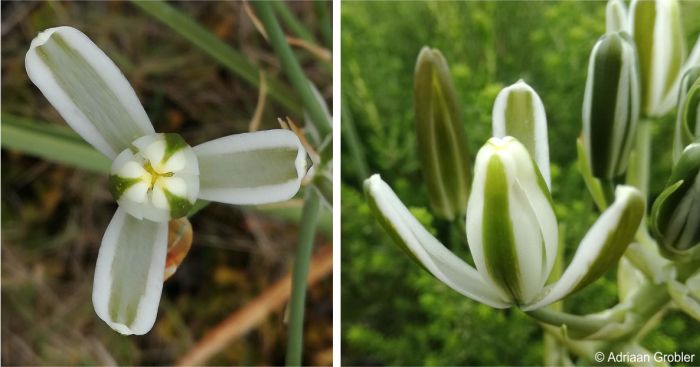
Uses
Use
Albuca fastigiata is a versatile plant with ornamental and medicinal uses and cultural significance. In horticulture, it is prized for its striking leaves and delicate flowers, making it a popular ornamental plant in gardens and indoor spaces. Best cultivated in full sun to partial shade, it needs well-drained, sandy soils with a slightly acidic pH, moderate watering, and can tolerate short periods of drought.
In ethnomedicine, Albuca fastigiata is used in KwaZulu-Natal to treat idiso, an illness caused by food poisoning or poisons administered by jealous rivals, and as protective charms. A recent study has found that the plantcontains compounds with potential anti-cancer properties, leading to research into its use as a possible treatment for cancer.
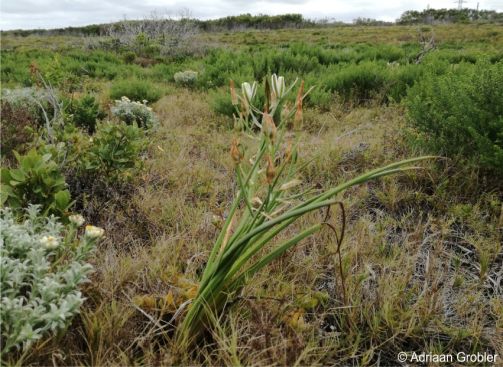
Growing Albuca fastigiata
Grow
This striking plant thrives in well-drained, sandy soils with a slightly acidic pH (around 6.0-6.5). Its water requirements are moderate, although it needs water throughout the year, but with a slightly drier period during the winter months. It requires full sun to partial shade, making it an ideal candidate for most sunny gardens. Preferred temperatures range between 10°C and 25°C, with a minimum of 5°C and a maximum of 30°C. Albuca fastigiata is sensitive to severe frost, and temperatures below -2°C can damage or kill the plant.
Albuca fastigiata can be propagated by division, seeds and leaf cuttings, offering flexibility for gardeners and plant enthusiasts. Division of bulbs is a common technique, where mature bulbs are lifted and the smaller bulbs that form around the original bulb are carefully separated and replanted. Sow seeds in well-draining soil in spring or summer and keep moist until germination. Transplant seedlings into individual containers when they are large enough to handle. Additionally, leaf cuttings can be used, where a healthy leaf is removed from the mother plant, allowed to dry for a few days, and then planted in well-draining soil and kept moist. These propagation techniques allow for the successful multiplication of Albuca fastigiata, making it easier to share and cultivate this unusual plant.
References
- Baker, J.G. 1897. Albuca fastigiata Dryand. Flora Capensis 6:458.
- Bredenkamp, C. L. 2019. A Flora of the Eastern Cape Province. Volume 3. Strelitzia 41. South African National Biodiversity Institute, Pretoria.
- Grobler, A. 2019-Oct . Observation of Albuca fastigiata, Schoenmakerskop, Eastern Cape. iNaturalist. Online. https://www.inaturalist.org/observations/48124861.
- Hutchings, A., Scott, A.H., Lewis, G. & Cunningham, A.B. 1996. Zulu medicinal plants: an inventory. University of Natal Press, Pietermaritzburg.
- iNaturalist. Observations of Albuca fastigiata. https://www.inaturalist.org/observations?subview=map&taxon_id=579425. Accessed 5 June 2025.
- Klopper R.R & Victor J.E 2005. Albuca fastigiata Dryand. National Assessment: Red List of South African Plants. https://redlist.sanbi.org/species.php?species=3795-31.
- Koorbanally, C., Mulholland, D.A. & Crouch, N. 2005. A novel 3-hydroxy-3-benzyl-4-chromanone-type homoisoflavonoid from Albuca fastigiata (Ornithogaloideae: Hyacinthaceae). Biochemical Systematics and Ecology 33(5): 545–549.
- Pooley, E. 1998. A field guide to wild flowers of Kwazulu-Natal and the eastern region. Natal Flora Publications Trust, Durban.
- Riegel, F. 2022-Jan. Observation of Albuca fastigiata, Thabo Mofutsanyane, Free State Drakensberg. iNaturalist. Online.https://www.inaturalist.org/observations/140669126.
- SANBI Plants of Southern Africa Online (POSA). Search - Albuca fastigiata; click on - Maps. https://posa.sanbi.org/sanbi/Explore. Accessed 5 Jun. 2025.
- Smit, I. 2023-Dec. Observation of Albuca fastigiata, Bergville, KZN Drakensberg. iNaturalist. Online. https://www.inaturalist.org/observations/193128018.
- Wahlberg, C. 2009-Dec. Observation of Albuca fastigiata, eastern Drakensberg, KZN. iNaturalist. Online. https://www.inaturalist.org/observations/10810239.
- Smith, C.A. 1966. Common names of South African plants. Memoirs of the Botanical Survey of South Africa No. 35. Government Printer, Pretoria.
Credits
Amanda Mdladla, Free State National Botanical Garden.
and Alice Notten, Kirstenbosch National Botanical Garden
June 2025
Acknowledgements: the authors thank Adriaan Grobler, Chris Wahlberg, Felix Riegel and Imke Smit for making their images available via iNaturalist.
Plant Attributes:
Plant Type: Bulb
SA Distribution: Eastern Cape, Free State, KwaZulu-Natal
Soil type: Sandy
Flowering season: Spring, Early Summer
PH: Acid
Flower colour: Green, White
Aspect: Full Sun, Morning Sun (Semi Shade), Afternoon Sun (Semi Shade)
Gardening skill: Average
Special Features:
Horticultural zones
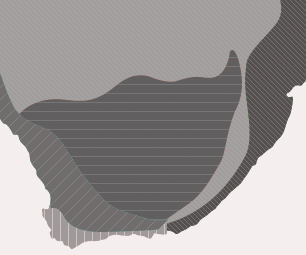







Rate this article
Article well written and informative
Rate this plant
Is this an interesting plant?
Login to add your Comment
Back to topNot registered yet? Click here to register.